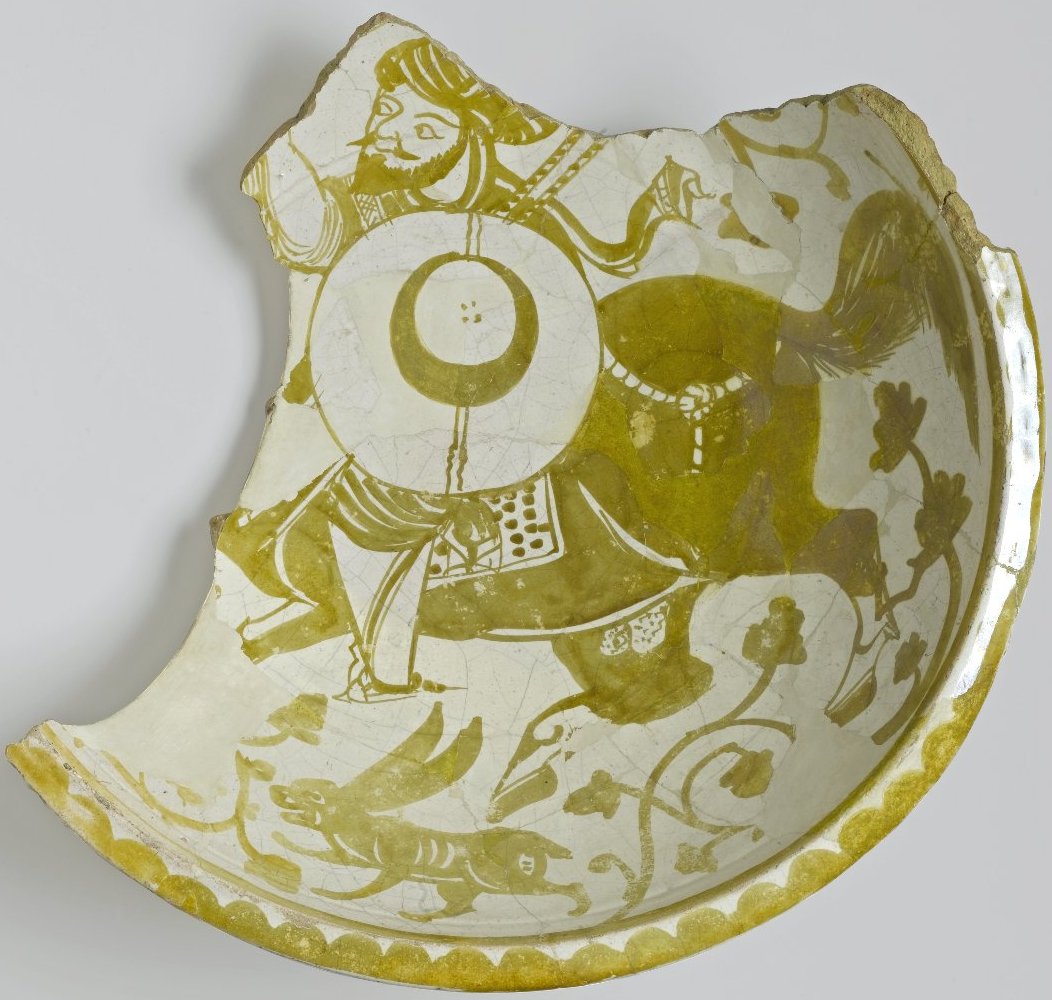
Join Amazon Prime - Watch Thousands of Movies & TV Shows Anytime - Start Free Trial Now
Fragment of a Fatimid Bowl Depicting a Mounted Warrior, 11th century



This fragment of a bowl, depicting a rider carrying a shield (and possibly 2 javelins) on a galloping horse, is decorated in the lustre technique, in which a metallic oxide glaze is applied to the body before firing, leaving a shimmering surface reminiscent of precious metals. Although this object was produced in Egypt during the period of the Fatimid dynasty (909-1171), luster was first developed as a decorative technique for ceramics in Iraq in the ninth century. The technology was also used in Syria and Iran between the eleventh and fifteenth centuries, and was revived in Iran in the late seventeenth or early eighteenth century. Surviving Fatimid Egyptian examples of lustreware were likely excavated at the site of Fustat (Old Cairo) in the early part of the twentieth century. These often display high-quality draftsmanship in the rendition of both humans and animals, quite similar to architectural and manuscript painting of the period.
Medium: Ceramic; earthenware, painted in luster on an opaque white glaze
Place Found: Fustat, Egypt
Date: 11th century
Source: Brooklyn Museum